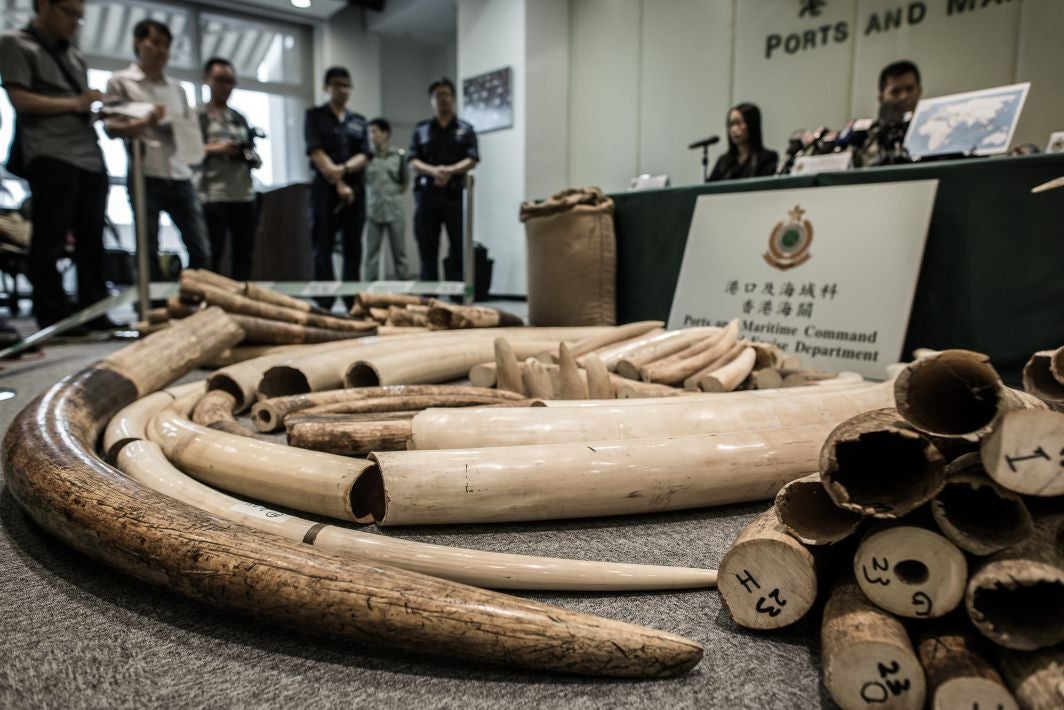Destroy the ivory or keep it? A 30-ton dilemma for Hong Kong
Customs officials are becoming more adept at confiscating ivory at the point of entry, but that’s just the beginning

Your support helps us to tell the story
From reproductive rights to climate change to Big Tech, The Independent is on the ground when the story is developing. Whether it's investigating the financials of Elon Musk's pro-Trump PAC or producing our latest documentary, 'The A Word', which shines a light on the American women fighting for reproductive rights, we know how important it is to parse out the facts from the messaging.
At such a critical moment in US history, we need reporters on the ground. Your donation allows us to keep sending journalists to speak to both sides of the story.
The Independent is trusted by Americans across the entire political spectrum. And unlike many other quality news outlets, we choose not to lock Americans out of our reporting and analysis with paywalls. We believe quality journalism should be available to everyone, paid for by those who can afford it.
Your support makes all the difference.Early last year, customs officers at the Port of Hong Kong pried open a shipping container marked “architectural stones” arriving from Kenya. Inside the container, wrapped in sacks and hidden underneath stone plates, were 779 elephant tusks. Just weeks before, these tusks were parts of living elephants roaming the African savannah. Now, they were headed for the illegal carving workshops of mainland China. If they hadn’t been intercepted, they’d likely have become ornaments gracing coffee tables of China’s nouveau riche.
The bust was just another day at the office for Hong Kong customs officers, who have been working overtime in recent years to curtail the trafficking of contraband ivory. As the Chinese consumer class has grown, so too has the demand for ivory. Hong Kong, with its busy seaport and location on the doorstep of mainland China, has become the preferred port of entry for smugglers. Between January and October of last year, Hong Kong Customs seized 7,230 kg of ivory, up from 5,596 kg in 2012.
Most of the ivory arrives by sea. The Port of Hong Kong is the world’s third busiest container port, with some 380,000 vessels arriving and departing yearly.
In August, customs officers seized 1,120 ivory tusks, 13 rhino horns and five pieces of leopard skin inside a container shipped from Nigeria. The contraband, hidden in a container supposedly containing wood, was worth about HK$41m (about £3.2m).
Under Hong Kong law, anyone importing or exporting undeclared items can face up to seven years in prison, while trading in endangered species carries a penalty of up to two years in prison. But the price of ivory on the black market – £1,350 per kg on the streets of Beijing – makes smuggling irresistible to some.
Now, thanks to its success at locating the contraband, Hong Kong has another problem to deal with: what to do with the 30-plus tons of ivory seized in recent years?
Keeping the ivory safe is both expensive and risky. After all, 30 tons of ivory at £1,350 a kilo is worth nearly £37m, a lavish payday for an intrepid thief. Seized ivory has gone missing from several African stockpiles in recent years.
Many environmentalists argue the ivory should simply be destroyed. This would make a bold anti-poaching statement, and would ensure that the ivory could never re-enter the market. In June, the Philippines smashed its five-ton ivory stockpile using construction equipment. In November, the United States crushed six tons in a publicised ceremony.
“If Hong Kong destroys its ivory it sends a particularly strong message,” said Grace Ge Gabriel, the Asia Regional Director for the International Fund for Animal Welfare. “It highlights the plight of elephants and shows that Hong Kong’s government is just not going to tolerate it.”
But the Hong Kong Endangered Species Advisory Committee, made up of scientists and other experts, decided not to pursue destruction earlier this year.
“Many members viewed that [the tusks] are still a valuable natural product, and if we destroy them it would be quite wasteful,” says Kenneth Leung, a professor at Hong Kong University’s School of Biological Sciences and a member of the committee.
Space for Giants, the beneficiary of The Independent’s Christmas Campaign, provides training to law enforcement personnel to secure convictions against those involved in the illegal ivory trade. Currently, while the arrest rate is high, convictions are woefully rare.
At the moment, the government lends out ivory for use in anti-poaching displays. But one student, 11-year-old Nellie Shute, has made it her goal to push Hong Kong into destroying the ivory stockpile.
Educational ivory displays only “reinforce the idea that ivory can be used as art,” Shute said, picking up a tusk elaborately carved to resemble a dancing woman and placing it in a cardboard box. “These belong to an elephant.”
Join our commenting forum
Join thought-provoking conversations, follow other Independent readers and see their replies
Comments